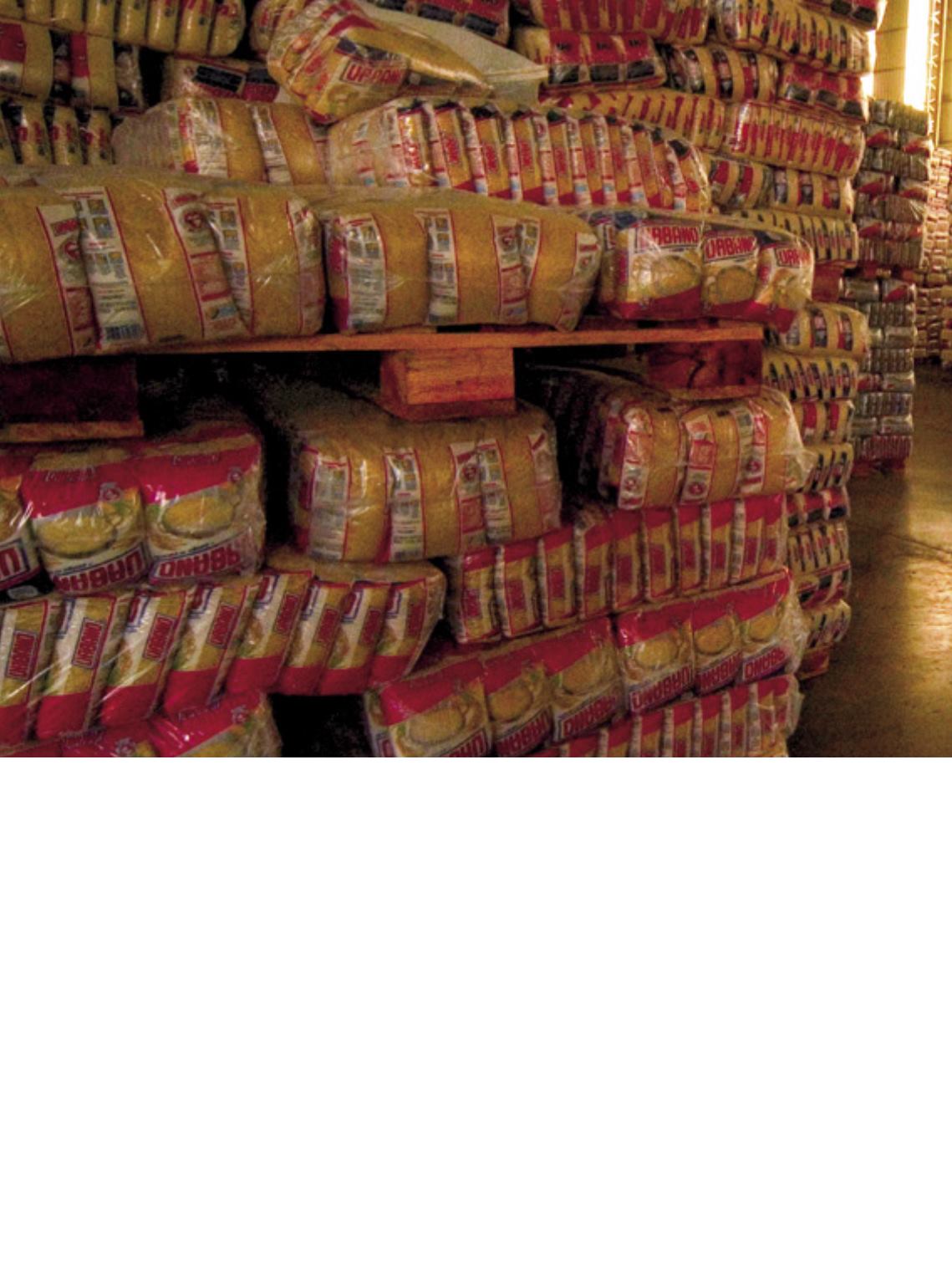
No
profit
T
he Brazilian rice supply chain
reachedthelimitofitsstrengthin
2017, inone of themost harrow-
ing crises ever faced by the sec-
tor. Year 2018 starts with much
hope,mobilizationoffarmersinsearchofdebt
renegotiation, recovery of prices and small-
er production costs. It is still a scenario of low
prices, in light of the new crop now reaching
themarket(estimatedat11.6milliontons).
The sum of the huge national crop (12.3
million tons, for the consumption of 11.5
million tons), unfavorable exchange rate
for exports, facilitating imports of rice from
Mercosur countries (especially from Para-
guay) resulted in an oversupplied domestic
market, with enough rice in the industries,
and retail sales at lower than expected pric-
es. Consumers took advantage of the situa-
tion, buying five kilograms of Type 1 rice at a
cost ranging fromR$ 7 toR$ 11. Thenear-ze-
ro inflation rates stemmostly fromthe small
food prices, particularly the items of the so-
called food basket, like rice and beans.
The minimum price policy of the federal
government, based on a production cost dis-
sociated from the reality in South Brazil made
thingsworse.Pricesofriceinthehuskdropped
24%during the year, fromthe R$ 51 in 2016 to
less than R$ 37 in 2017. The production cost in
Farmgate prices of rice inBrazil dropped
24 percent in 2017, year inwhichrice farming endured
highproduction costs, withno chance for competing
Inor Ag. Assmann
20


